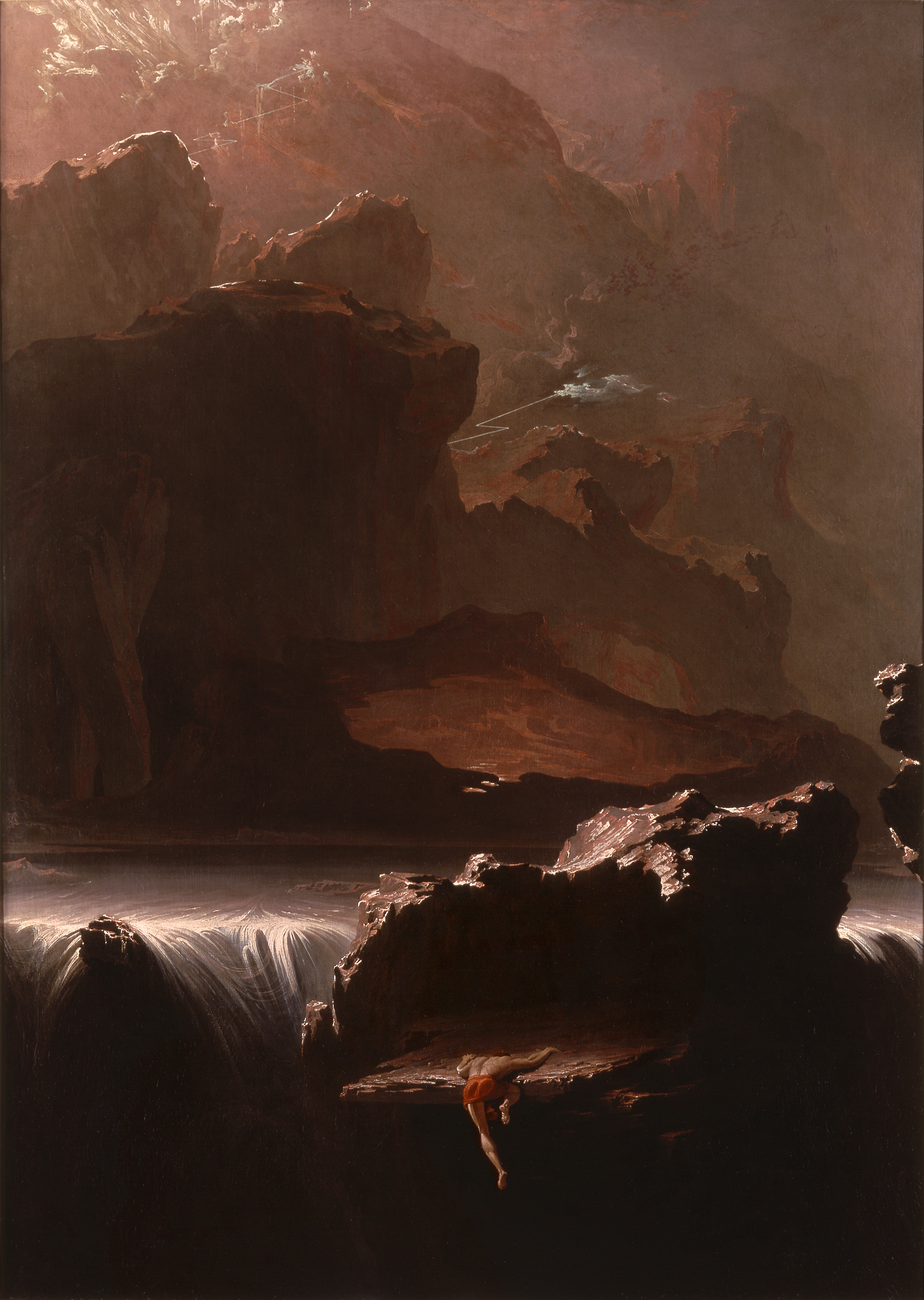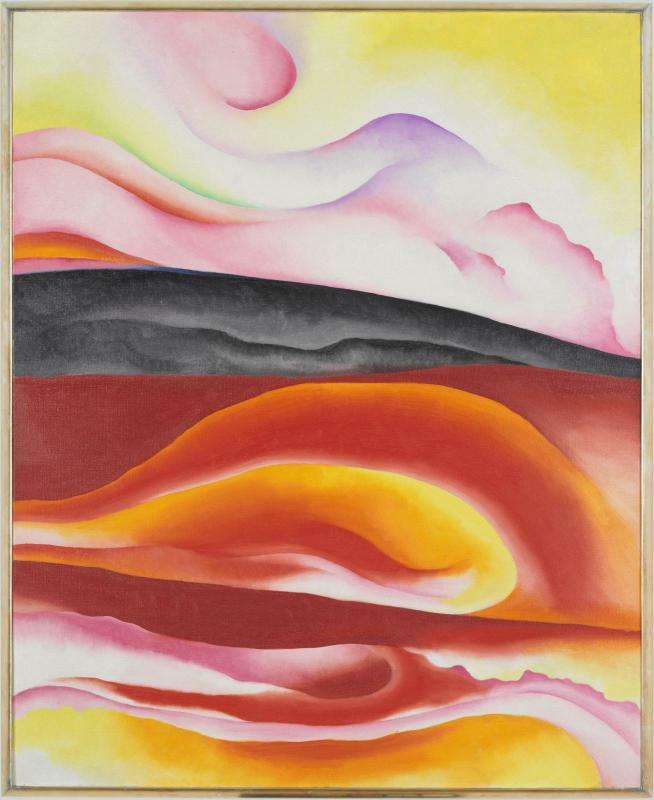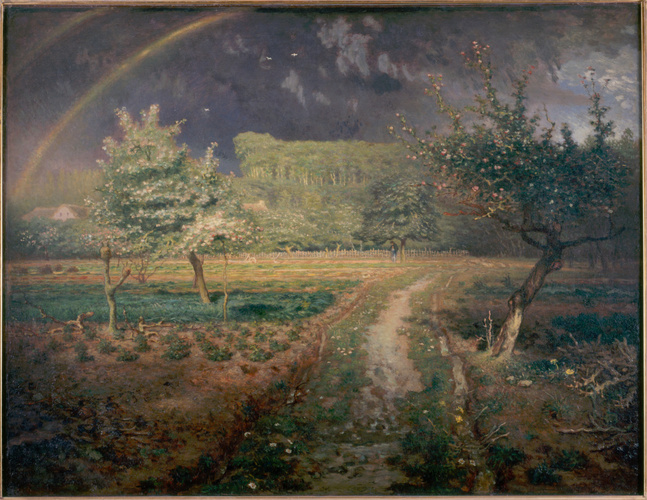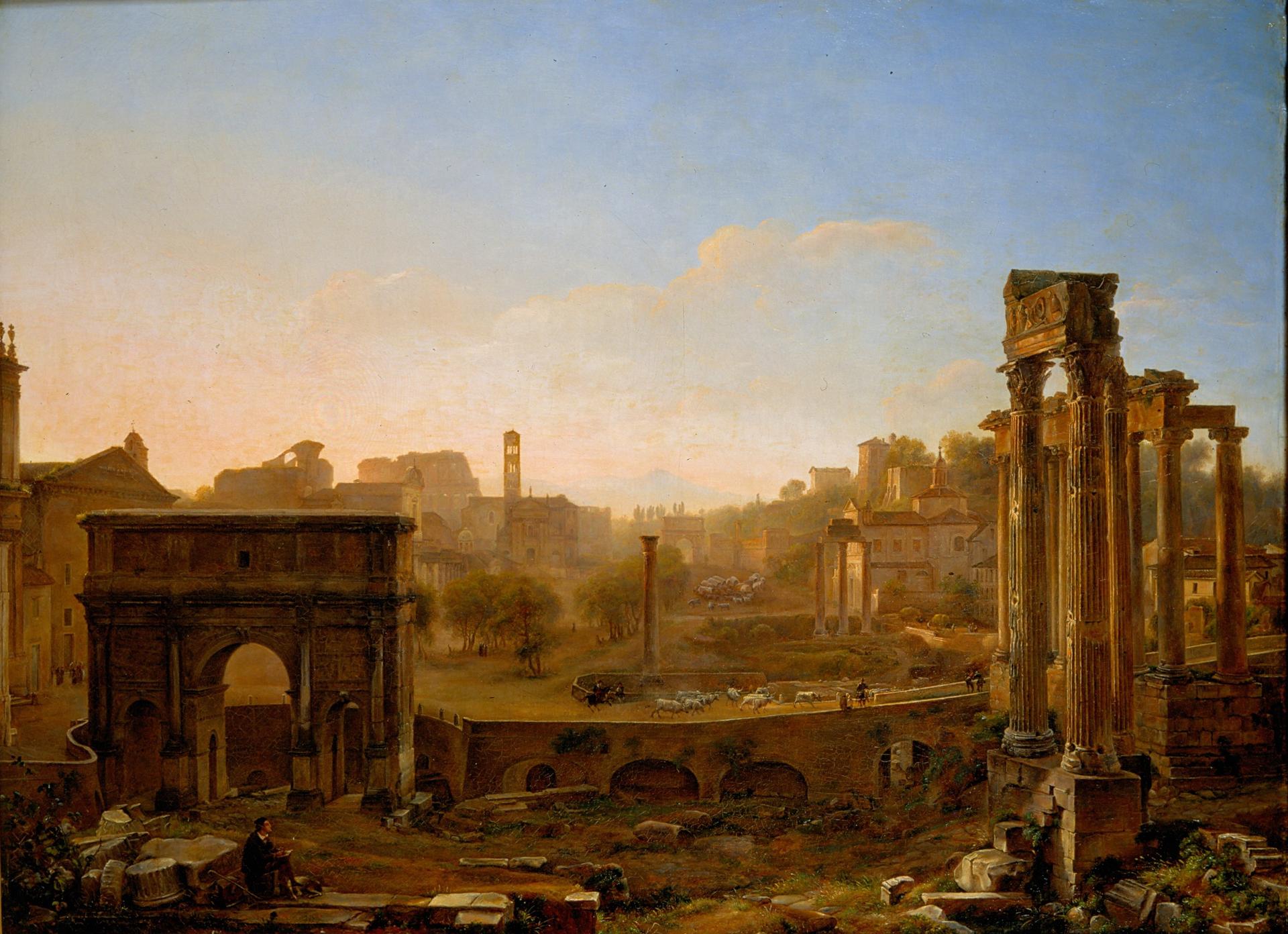
What is a landscape?

About the exhibition "Landscape. Window on Nature", on show at the Louvre-Lens until 24 July.
A fascinating exhibition tells the story of landscape painting at the Louvre-Lens. It asks the question: from the Renaissance to the present day, what is a landscape from an artistic point of view? With works by Monet, Hokusai and O'Keeffe, and an exceptional scenography to boot, it's a perfect opportunity to dive straight into landscape painting.
Since the Renaissance, artists have been re-enacting the myths of Creation in their own way, depicting sky, earth, sea, light and darkness. The shimmering snapshots of the Impressionists, the fleeting mists of Chinese mountain and water paintings (shanshui), the thousand and one views of Japanese prints - all these works whisper messages made up of light and shadow. This coded language has its origins in what the 17th century called the "ornaments of nature": trees, plants, rocks, streams...
In order to decipher this language, the exhibition at Lens delves into the sources of artistic representations and follows the artist through the stages of his work, from the preparatory sketch to the finished work. The exhibition explores different types of landscape and different views of nature, from small drawings to gigantic panoramas, from peaceful plains to threatening volcanoes, from ephemeral moments to visions of eternity, from figuration to abstraction.
The enigmas are many: what places are we talking about? What tools do the artists use? What was their relationship to the science of their time? How did they feel about natural sites? And finally, is a painted landscape a work of art for sale to satisfy lovers of windows onto nature in their homes, to feed the art market and supply art galleries, or an almost mystical experience for the artist to become one with nature?
In addition to the works themselves - both famous and more unexpected - the exhibition presents objects that help to answer these questions, such as teaching manuals written by the artists or utensils used in the studio or outdoors. All of them allow us to follow the amateurs in their interiors, where the landscape becomes a décor, as well as the artists during their expeditions, in their gardens or further afield.
In today's world, which has been totally transformed by human activity, the themes of landscape and nature are highly topical; the works of art question them in their own way, demonstrating, if proof were needed, the extent to which art and landscape are linked. To coincide with the exhibition, the June issue of L'Oeil magazine offers readers six keys to a better understanding of landscape painting, based on a selection of six works of art on display.
Spring, by Jean-François Millet,
With Le Printemps, by Jean-François Millet, the journalist illustrates the animistic feeling that is particularly prevalent in the cycle of the four seasons conceived by the 19th-century painter. It's all about creation. "Since the Renaissance and the affirmation of painting as a window onto nature, landscapes have acquired a dimension that is both mimetic and almost demiurgic," writes Isabelle Manca-Kunert. "By reinventing a world in miniature, the artist acts like a creator god, modelling his universe as he pleases. This sacred dimension, closely linked to the metaphor of divine creation, explains the predominance of the theme of the biblical landscape in Western painting; there are countless artists who have depicted paradise, whether on earth or lost. Although the religious connotations have faded over the centuries, the pantheistic tone of nature remains a constant.
Broken tree at Kerket, near Meyringen, by Alexandre Calame
The second key is the notion of character. "Landscape art is often mistakenly seen as a nineteenth-century invention inseparable from the practice of plein air," points out the L'Oeil journalist. "But landscape painting is almost as old as painting itself. As early as the seventeenth century, the genre was theorised and its practice highly codified. Alexandre Calame's Arbre brisé au Kerket, près de Meyringen (Broken Tree at Kerket, near Meyringen) is a wonderful example of the particular interest shown by artists in trees that are remarkable for their size or physiognomy. "The tree is gradually becoming a motif in itself, a sort of alter ego of the artist, and painters are drawing striking portraits from their contemplation," notes Isabelle Manca-Kunert.
View of the Forum in the morning, painted by Louise Joséphine Sarazin de Belmont
Atmosphere is, of course, the third key to landscape painting. With the example of this vaporous View of the Forum in the Morning, painted by Louise Joséphine Sarazin de Belmont in 1860, the art magazine reminds us how the painting of ruins logically became the fashionable subject after the rediscovery of Greco-Roman ruins at the end of the 18th century, giving rise to a wave of anticomania that was to excite the whole of Europe. "For artists, it had the advantage of offering an inexhaustible repertoire of subjects, but above all of profoundly renewing the genre of historical landscape by giving it a highly seductive topographical dimension.

Sadak in search of the waters of oblivion - John Martin
As opposed to idyllic landscapes recreated with the tip of a brush, there is the famous "sublime", that singular aesthetic theorised by the philosopher Edmund Burke as provoking "a delicious terror". This disturbing feeling arises from contemplation mixed with dread. Romantic artists vied with each other in their talent to capture this feeling, drawing on their imagination as well as literary descriptions to create a disturbance in the viewer that was as much frightening as it was fascinating. John Martin, for example, drew on mythical and apocalyptic themes to lay the foundations for a fantastic aesthetic that would later inspire the cinema. The art magazine reproduces his 1812 oil on canvas entitled Sadak in Search of the Waters of Oblivion.
To talk about ecology, the fifth key to understanding landscape painting, the journalist chose Théodore Rousseau, of course. The emblematic painter of the Ile-de-France region took a stand to save the forest of Fontainebleau, campaigning for its preservation and transforming it into an artistic reserve. He even succeeded in having it protected by imperial decree: the first administrative measure concerning the conservation of a natural area was born.

Red, Yellowand Black Streak - Georgia O'Keeffe
Finally, the sixth key suggested by L'Oeil de l'amateur brings us to modern and contemporary art, which seeks to represent the immanent energy of nature. As Isabelle Manca-Kunert writes, "Whether mental, emotional or symbolic, abstract landscapes blur the lines. Despite their dreamlike stylisation, Georgia O'Keeffe's landscapes still betray the vestige of a composition. This is an opportunity to revisit the American painter's brilliantly coloured oil on canvas Red, Yellowand Black Streak, painted in 1924.
Illustrations :
- Jean-François Millet - Le Printemps
Entre 1868 et 1873. Huile sur toile. H. 86,0 ; L. 111,0 cm.
Don Mme Frédéric Hartmann, 1887
© Musée d’Orsay, Dist. RMN-Grand Palais / Patrice Schmidt
- Arbre brisé au Kerket, près de Meyringen, d’Alexandre Calame
© 2001 RMN-Grand Palais (musée du Louvre) / René-Gabriel Ojéda
- Vue du Forum le matin, peinte par Louise Joséphine Sarazin de Belmont
© MBA Tours, cliché Patrick Boyer
- Sadak à la recherche des eaux de l’oubli - John Martin
Saint Louis Art Museum
- Red, Yellowand Black Streak - Georgia O’Keeffe
© Georgia O'Keeffe Museum / Adagp, Paris
Crédit photographique : Audrey Laurans - Centre Pompidou, MNAM-CCI /Dist. RMN-GP







































































